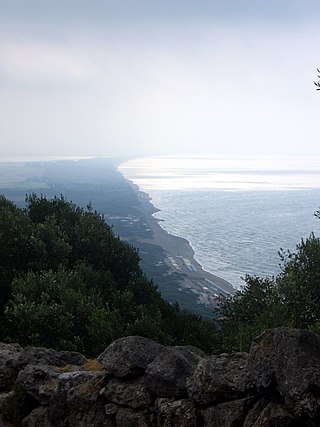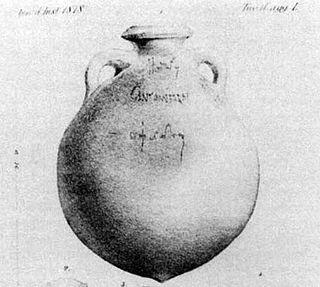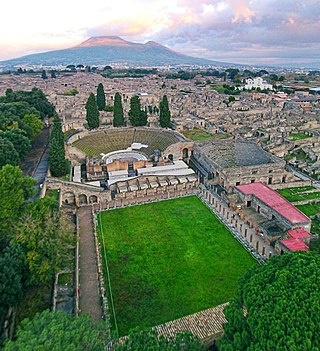Related Research Articles

A merchant is a person who trades in commodities produced by other people, especially one who trades with foreign countries. Merchants have been known for as long as humans have engaged in trade and commerce. Merchants and merchant networks operated in ancient Babylonia, Assyria, China, Egypt, Greece, India, Persia, Phoenicia and Rome. During the European medieval period, a rapid expansion in trade and commerce led to the rise of a wealthy and powerful merchant class. The European Age of Discovery opened up new trading routes and gave European consumers access to a much broader range of goods. By the 18th century, a new type of manufacturer-merchant had started to emerge and modern business practices were becoming evident.

Fish sauce is a liquid condiment made from fish or krill that have been coated in salt and fermented for up to two years. It is used as a staple seasoning in East Asian cuisine and Southeast Asian cuisine, particularly Myanmar, Cambodia, Laos, Philippines, Thailand, and Vietnam. Some garum-related fish sauces have been used in the West since the Roman times.

An amphora is a type of container with a pointed bottom and characteristic shape and size which fit tightly against each other in storage rooms and packages, tied together with rope and delivered by land or sea. The size and shape have been determined from at least as early as the Neolithic Period. Amphorae were used in vast numbers for the transport and storage of various products, both liquid and dry, but mostly for wine. They are most often ceramic, but examples in metals and other materials have been found. Versions of the amphorae were one of many shapes used in Ancient Greek vase painting.

The cuisine of ancient Rome changed greatly over the duration of the civilization's existence. Dietary habits were affected by the political changes from kingdom to republic to empire, and Roman trading with foreigners along with the empire's enormous expansion exposed Romans to many new foods, provincial culinary habits and cooking methods.
In marketing, brand management begins with an analysis on how a brand is currently perceived in the market, proceeds to planning how the brand should be perceived if it is to achieve its objectives and continues with ensuring that the brand is perceived as planned and secures its objectives. Developing a good relationship with target markets is essential for brand management. Tangible elements of brand management include the product itself; its look, price, and packaging, etc. The intangible elements are the experiences that the target markets share with the brand, and also the relationships they have with the brand. A brand manager would oversee all aspects of the consumer's brand association as well as relationships with members of the supply chain.

Garum is a fermented fish sauce that was used as a condiment in the cuisines of Phoenicia, ancient Greece, Rome, Carthage and later Byzantium. Liquamen is a similar preparation, and at times they were synonymous. Although garum enjoyed its greatest popularity in the Western Mediterranean and the Roman world, it was earlier used by the Greeks. The taste of garum is thought to be comparable to that of today's Asian fish sauces.
The gens Artoria was a minor plebeian family at ancient Rome. Few members of this gens are mentioned in history, but a number are known from inscriptions. Under the later Empire at least some of them were of senatorial rank.

Cosa was an ancient Roman city near the present Ansedonia in southwestern Tuscany, Italy. It is sited on a hill 113 m above sea level and 140 km northwest of Rome on the Tyrrhenian Sea coast. It has assumed a position of prominence in Roman archaeology owing to its excavation.

Country of origin (CO) represents the country or countries of manufacture, production, design, or brand origin where an article or product comes from. For multinational brands, CO may include multiple countries within the value-creation process.

Fish balls are the balls made from fish paste which are then boiled or deep-fried. Similar in composition to fishcake, fish balls are often made from fish mince or surimi, salt, and a culinary binder such as tapioca flour, corn, or potato starch.

Shrimp paste or prawn sauce is a fermented condiment commonly used in Southeast Asian and Coastal Chinese cuisines. It is primarily made from finely crushed shrimp or krill mixed with salt, and then fermented for several weeks. It is sold either in its wet form or sun-dried and either cut into blocks or sold in bulk. It is an essential ingredient in many curries, sauces and sambal. Shrimp paste can be found in many meals in Cambodia, Indonesia, Laos, Malaysia, Myanmar, the Philippines, Singapore, Thailand, and Vietnam. It is often an ingredient in dip for fish or vegetables.

A titulus pictus is an ancient Roman commercial inscription made on the surface of certain artefacts, usually the neck of an amphora. Typically, these inscriptions were made in red or black paint. The inscription specifies information such as origin, destination, type of product, and owner. Tituli picti are frequent on ancient Roman pottery containers used for trade. They were not exclusively used for trade. They were also used to provide easily recognizable advertisements and may have served as insurance if a good was damaged in some way. There are around 2,500 tituli picti recorded in CIL IV.

Pompeii was a city in what is now the municipality of Pompei, near Naples, in the Campania region of Italy. Along with Herculaneum, Stabiae, and many surrounding villas, the city was buried under 4 to 6 m of volcanic ash and pumice in the eruption of Mount Vesuvius in 79 AD.

The House of the Centenary was the house of a wealthy resident of Pompeii, preserved by the eruption of Mount Vesuvius in 79 AD. The house was discovered in 1879, and was given its modern name to mark the 18th centenary of the disaster. Built in the mid-2nd century BC, it is among the largest houses in the city, with private baths, a nymphaeum, a fish pond (piscina), and two atria. The Centenary underwent a remodeling around 15 AD, at which time the bath complex and swimming pool were added. In the last years before the eruption, several rooms had been extensively redecorated with a number of paintings.

The gens Vipsania or Vipsana was an obscure plebeian family of equestrian rank at ancient Rome. Few members of this gens appear in history, although a number are known from inscriptions. By far the most illustrious of the family was Marcus Vipsanius Agrippa, a close friend and adviser of Augustus, whom the emperor intended to make his heir. After Agrippa died, Augustus adopted his friend's sons, each of whom was considered a possible heir to the Empire, but when each of them died or proved unsuitable, Augustus chose another heir, the future emperor Tiberius.
The gens Numicia was an ancient patrician family at Rome. The first of the Numicii to appear in history was Titus Numicius Priscus, consul in 469 BC. Later members of the family were plebeian. Members of this gens are first mentioned down to imperial times, and the nomen Numicius is regularly confused with Numisius, which was probably nothing more than a different form of the same gentile name.
The gens Seppia was an obscure plebeian family at ancient Rome. Few members of this gens appear in history, but many are known from inscriptions.
The gens Septicia was an obscure plebeian family at ancient Rome. Hardly any members of this gens are mentioned in ancient writers, but a number are known from inscriptions. The most famous of the Septicii was Gaius Septicius Clarus, Prefect of the Praetorian Guard under the emperor Hadrian.

Aulus Umbricis Scaurus was a Pompeiian manufacturer-merchant, known for the production of garum and liquamen, a staple of Roman cuisine. He was active in Pompeii between c. 25-35 CE and 79 CE. Scholars believe that A. Umbricius Scaurus was Pompeii's leading fish sauce manufacturer. His products were traded across the Mediterranean in the first century.
The gens Umbricia was a minor plebeian family at ancient Rome. Only a few members of this gens are mentioned by Roman writers, but they had achieved senatorial rank by the second century. The most famous of the Umbricii are probably the haruspex Gaius Umbricius Melior, who served the emperors of the middle first century, and Aulus Umbricius Scaurus, a merchant of Pompeii whose fish sauces were widely distributed. Quintus Umbricius Proculus was a second-century governor of Hispania Citerior. Many other Umbricii are known from inscriptions.
References
- ↑ Dobbins, J. J. and Foss P. W., The World of Pompeii, Routledge: London and New York, 2008
- ↑ Berdowski, Piotr (2008). "Roman Businesswomen. I: The case of the producers and distributors of garum in Pompeii". Analecta Archaeologica Ressoviensia (3): 251–271. Retrieved 20 October 2021.
- ↑ Corcoran, Thomas H. (1963). "Roman Fish Sauces". The Classical Journal. 58 (5): 204–210. ISSN 0009-8353.
- ↑ Berdowski, P., "Roman Businesswomen. I: The case of the producers and distributors of garum in Pompei", Analecta Archaeologica Ressoviensia, tom 3, 2008, pp 251-272 Online: http://www.archeologia.univ.rzeszow.pl/wp-content/uploads/2013/05/analecta_3/08_Berdowski.pdf
- ↑ Curtis, R.I., Garum and Salsamenta: Production and Commerce in Materia Medica, Leiden, E.J. Brill, 1991, p. 92; Corcoran, T.H., "Roman Fish Sauces", The Classical Journal, Vol. 58, No. 5, 1963, pp. 204-210
- ↑ Cooley, A.E. & Cooley, M.G.L., Pompeii and Herculaneum: A Sourcebook, Routledge, 2013, p. 250
- 1 2 Berdowski, P., "Some remarks on the economic activity of women in the Roman Empire: a research problem", in P. Berdowski, B. Blahaczek (eds), Haec mihi in animis vestris templa: Studia Classica in Memory of Professor Lesław Morawiecki, Rzeszów, 2007, pp 283-298